“Merry Christmas” in Japanese — How the Japanese Celebrate a “Merii Kurisumasu” and Other Winter Holidays
Do you hope to have a merry Christmas in Japan? Or do you have Japanese friends that you’d like to wish happy holidays to? In this article, I’ll teach you all about Japanese words, phrases, culture, and customs around the winter holidays, including Christmas and New Year’s. Now buckle up in your Santa sleigh–more than one thing about Christmas in Japan might surprise you in this article!
Table of contents
Christmas in Japan
First off, you may be wondering if Japan even celebrates Christmas. Japan’s name for Christmas is クリスマス (Kurisumasu), and it comes from the English word. This is because Christmas is not a traditionally celebrated holiday in Japan.
With an estimated less than one per cent of the population being Christian, you may assume that Christmas is not a popular holiday in Japan. But actually, it is a major holiday–although it differs greatly from how many other countries celebrate it.
Except for the small population of Christians, Christmas in Japan is a purely secular and mostly commercial holiday. It is celebrated on December 24, Christmas Eve. (This is クリスマスイブ Kurisumasu Ibu in Japanese.) It was only popularized as a major celebration in the 1970s. How, you may ask? The answer: an extremely successful KFC marketing campaign. More on that later!
How to Wish a “Merry Christmas” in Japanese
First, I’ll give you a few phrases to use.
The most popular way to say “Merry Christmas” in Japanese is simple. In Japanese characters, Merry Christmas is メリークリスマス (merii Kurisumasu)! This is the most common greeting. It can be used with anyone, regardless of whether they are at a higher or lower rank than you, or if they are Christian or not.
You may also already be familiar with the phrase おめでとうございます (omedetou gozaimasu). This phrase means “congratulations,” and it’s used in most other celebratory greetings, such as お誕生日おめでとうございます (otanjoubi omedetou gozaimasu) for “Happy birthday,” and 明けましておめでとうございます (akemashite omedetou gozaimasu) for “Happy New Year.” (We’ll go more in-depth about this last one later.)
So can we use use おめでとうございます (omedetou gozaimasu) to wish a merry or happy Christmas in Japanese? It is technically possible. This would make it クリスマスおめでとうございます (Kurisumasu omedetou gozaimasu). However, this is mostly used with people who are Christian and celebrating Christmas as a religious holiday. In other words, since most Japanese people don’t have a religious connection to it, they’re not particularly celebrating anything at Christmas. So this phrase is not very common.
By the way, at Japanese church services, you may also hear the greeting 主の御降誕おめでとうございます (Nushi no gokoutan omedetou gozaimasu). This is a much more stiff and formal phrase celebrating the “birth of our Lord.”
But as I said, you’re much more likely to hear the English-inspired Merii Kurisumasu in most cases.
Merry Christmas in Japanese – Phrase List
Here’s a recap of the different ways to say “Merry Christmas” in Japanese:
- メリークリスマス (merii Kurisumasu) – “Merry Christmas”
- おめでとうございます (omedetou gozaimasu) – “Congratulations!”
- クリスマスおめでとうございます (Kurisumasu omedetou gozaimasu) – “Happy Christmas” (only to those celebrating Christmas as a religious holiday)
- 主の御降誕おめでとうございます (Nushi no gokoutan omedetou gozaimasu) – “ Congratulations on the birth of our Lord”
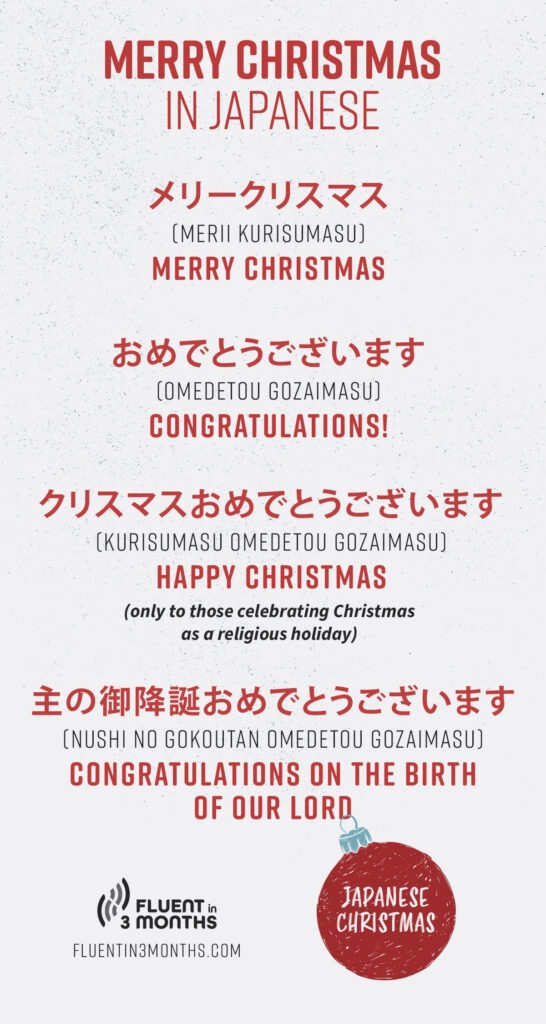
How to Celebrate Christmas with Food in Japan
So as I mentioned, Christmas in Japan became popular from a KFC marketing campaign in the 1970s. Legend has it that a very devoted KFC manager overheard a foreigner expressing nostalgia for how they celebrated Christmas back home with turkey. Turkey is hard to find in Japan, but chicken is very common. So KFC went with the substitute and convinced the population that the right way to celebrate Christmas is by eating a bucket of KFC!
Even though the nationality of the foreigner overheard is unknown, KFC marketed eating fried chicken for Christmas as an American tradition, and this belief has stuck. (But as an American, I have my doubts that the foreigner in question would have been from the same country as me. Since turkey is a November Thanksgiving staple, many people are tired of turkey by the time Christmas rolls around. Who knows!) In any case, imagine the surprise when I tell Japanese people that we don’t eat KFC for Christmas!
Over the years, other fried chicken eateries joined the campaign. Nowadays, everywhere, including convenience stores, advertise their Christmas fried chicken deals toward the end of the year. But KFC reigns supreme. It is so popular that you may need to make your order and reserve your pick-up time slot several weeks in advance!
(Fun fact: Colonel Sanders is often dressed up in a Santa suit in Japan for marketing. With the white hair, I agree that they do look a bit similar!)
By the way, KFC is most commonly known as “Kentucky” in Japan. In Japanese, this is ケンタッキー (Kentakkii).
Another popular food eaten at this time in Japan is a “Christmas cake,” or クリスマスケーキ (kurisumasu keeki). This is usually quite similar to strawberry shortcake, and is a simple white sponge cake with strawberries and whipped cream on top. Ever notice the cake emoji (🎂) on your phone? That’s the iconic Japanese Christmas cake!
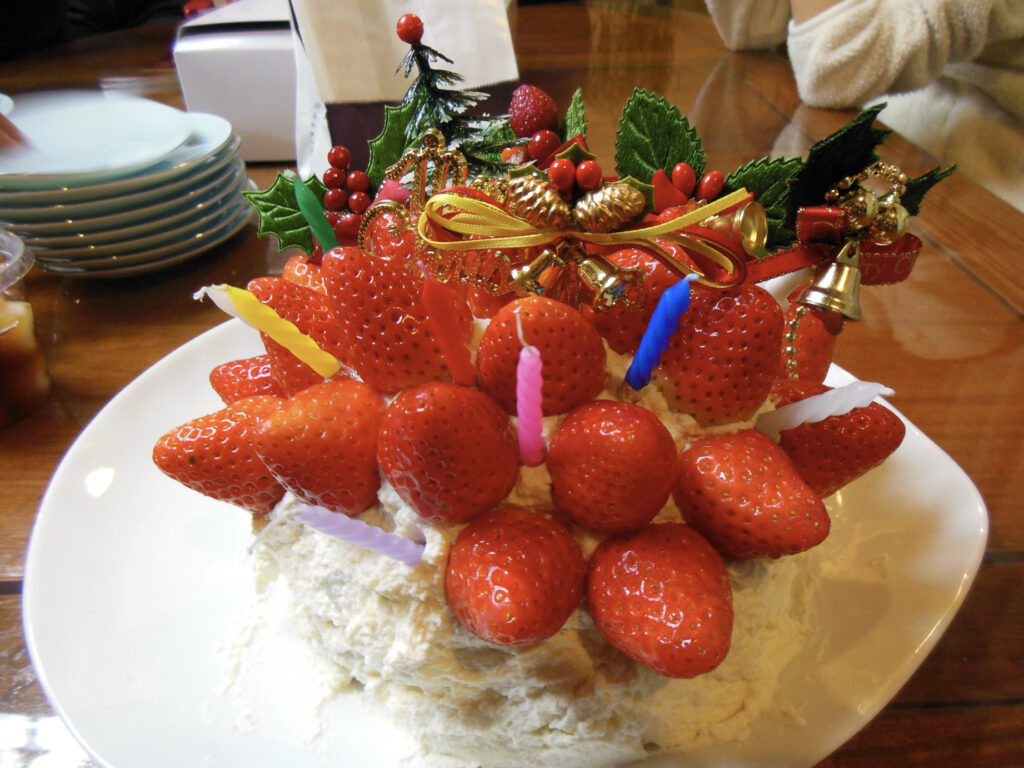
Christmas cakes might be especially popular around Christmas because of the white and red coloring. Although Japan generally values eating fruits and vegetables in-season, there’s a huge demand for strawberries in the winter because of Christmas cakes! That’s probably one of the reasons why many strawberries are grown in greenhouses in Japan.
Actually, many KFC Christmas deals include a Christmas cake with the bucket of chicken, and maybe even a bottle of champagne!
How to Celebrate Christmas with a Date in Japan
Now, I alluded that Christmas is a romantic holiday in Japan. Actually, it’s like Valentine’s Day in many Western countries!
But wait, doesn’t Japan also celebrate Valentine’s Day? Yes, but it’s a bit different from Valentine’s Day in many Western countries. In Japan, women are expected to give chocolates and express their love to men. In return, men do the same for women on March 14, otherwise known as White Day.
So expectations are placed on one gender on Valentine’s Day and White Day, but for Christmas, they’re both on rather equal playing fields. This is why Japanese Christmas is similar to Valentine’s Day in the West. Couples go on a date デート (deeto) on Christmas Eve!
Around this time, there are many winter illuminations (冬のイルミネーション / fuyu no irumineeshon) around the country. Famous ones include Nabana no Sato (なばなの里) in Mie Prefecture, and Kobe Illuminarie (神戸イルミナリエ) in Hyogo Prefecture, and the Ashikaga Flower Park (あしかがフラワーパーク) in Tochigi Prefecture. These are incredibly popular date spots! Many couples also have a nice dinner in a fancy restaurant.
New Year’s in Japan
You might be wondering if Japan has a traditional holiday greeting. Yes, it does! Whereas Christmas is often the most important winter holiday in many other countries, New Year’s is the most important winter holiday in Japan.
Unlike Korea or China, Japan follows the New Year according to the solar calendar–not the Lunar New Year (also known as the Chinese New Year). It has done so since the late 19th century! That means they officially and culturally celebrate the new year at the same time as the majority of other countries, on the last day of December and the first day of January.
Happy New Year in Japanese
The word for New Year’s Eve in Japanese is 大晦日 (Oomisoka). The word for New Year’s Day is お正月 (Oshougatsu). The word for New Year’s in general or just the “new year” is 新年 (shinnen).
And if you want to wish someone “Happy New Year,” you can say 明けましておめでとうございます (akemashite omedetou gozaimasu). Use this phrase to someone you show respect to, like an elder or your boss. If you are speaking casually, you drop the gozaimasu and just say 明けましておめでとう (akemashite omedetou). If you want to be really informal, you can contract it to アケオメ (akeome)!
The main verb in this phrase, 明ける (akeru) and conjugated as 明けまして (akemashite), is a homonym with the word “to open,” or 開ける (akeru). But don’t get them confused! Here with this specific kanji, it means “to dawn.” So you are congratulating someone on the dawning of a new year!
Also, usually, you say this phrase on New Year’s Day. But if you greet someone for the first time in the year and it’s relatively close to New Year’s Day, you can still say it!
If someone tells you this phrase, you can respond with the same, and then add 今年もよろしくお願いします (kotoshi mo yoroshiku onegaishimasu) if you are speaking formally. If casually, you can say 今年もよろしく (kotoshi mo yoroshiku). This doesn’t have a good direct translation into English, but it means something like, “I look forward to continuing our good relationship this year.”
Happy New Year in Japanese – Phrase List
Here’s a recap of the different ways to say “Happy New Year” in Japanese:
- 明けましておめでとうございます (akemashite omedetou gozaimasu) – “Happy New Year” (formal)
- 明けましておめでとう (akemashite omedetou) – “Happy New Year” (informal)
- アケオメ (akeome)! – “Happy New Year” (casual)
- 今年もよろしくお願いします (kotoshi mo yoroshiku onegaishimasu) – “I look forward to continuing our good relationship this year” (formal)
- 今年もよろしく (kotoshi mo yoroshiku) – “I look forward to continuing our good relationship this year” (informal)
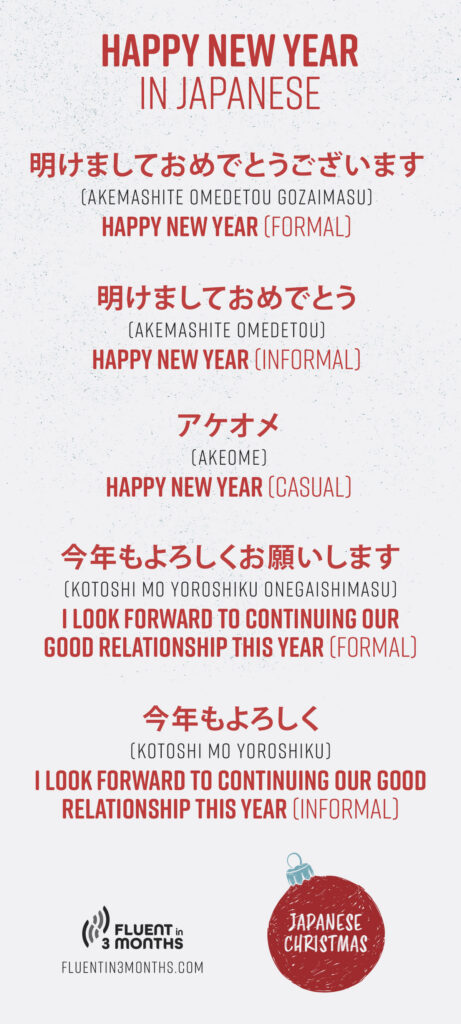
How to Celebrate New Year’s in Japan
While Christmas is a commercial holiday in Japan, New Year’s is a family-oriented holiday. It’s basically the reverse of the West, where Christmas is the family-oriented holiday, and New Year’s is a time to party!
Also, while Westerners might engage in “spring cleaning,” Japanese people do their major yearly cleaning (called 大掃除 / ososouji) around this time in preparation for the new year.
Of course, no Japanese celebration would be complete without special food. Many Japanese people eat 年越しそば (toshikoshi soba), which literally means “pass the year soba.” (Soba is a type of buckwheat noodle.) The long noodles represent a long life!
Other significant New Year’s foods お節料理 (o-sechi ryouri). This is a feast of several small dishes in an elaborate lacquered bento-like box, called a 重箱 (juubako). This tradition dates back to the Heian Period (794–1185), so it’s been around for a while! The main components of osechi ryouri often differ by region, so you might taste somewhat different ingredients if you travel to different parts of Japan over New Year’s!
Mochi, or pounded rice cakes, are commonly made and eaten around this time too. (Sometimes, they’ll be pounded by sumo wrestlers!) Although take care when you eat fresh mochi, since a few people (usually elderly) die every year choking on it. You may have also seen 鏡餅 (kagami mochi), which is two mochi topped with a tangerine leaf. This is purely decorational though–don’t try to eat it!
Finally, many families gather around the TV during the leadup to the New Year’s countdown. They watch Kohaku (紅白), a popular singing show where the nation’s most famous singers compete against each other. There are two teams: Team Red and Team White!
Otherwise, Japanese people might spend their New Year’s Eve at a Shinto shrine or Buddhist temple. At midnight, Buddhist temples ring their bells a total of 108 times. This occasion is called 除夜の鐘 (joya no kane) and symbolizes getting rid of the 108 earthly temptations according to Buddhism. The first shrine visit of the new year is also very important in Japanese culture. This is called 初詣 (hatumoude) or 初参り (hatsumairi).
More Japanese Holiday Greetings
Many Japanese workplaces shut down for New Year’s. So if you want to wish a colleague, “Have a happy New Year’s” before the break you can tell them 良いお年をお越しください (Yoi o-toshi wo okoshi kudasai). You might also hear other variants, such as 良いお年をお迎えください (Yoi o-toshi wo omukae kudasai). These are quite formal set phrases using keigo, or honorific language.
If you’d like to be a bit less formal, you can shorten this to 良いお年を (Yoi o-toshi wo)! This still uses some keigo, but it’s a bit less stiff. You can use this latter phrase quite flexibly. Whatever you’d like to wish someone to have a good one of, you can replace otoshi with that word. So, to say, “Have a good Christmas!” you can say, 良いクリスマスを (Yoi Kurisumasu wo).
To say, “Have a happy Hanukkah,” you can say, 良いハヌカー (Yoi Hanukaa wo)!
To say, “Have a good winter break,” you can say, 良い冬休みを (Yoi fuyuyasumi wo)!
You will usually say these phrases as a parting greeting. Usually it’s the last time you see that person until the holiday is over.
Greeting cards (グリーティングカード / guriitingu kaado) are also common to send around this time. In fact, mid-December and early January are the busiest times of the year for post offices in Japan! You may guess that Japanese people usually send New Year’s cards, rather than Christmas cards, though.
Greeting cards specifically for New Year’s are called 年賀状 (nengajou). They often include phrases such as ご健康とご多幸をお祈りいたします (go-kenkou to go-takou wo oinori itashimasu). This translates literally into something along the lines of “I am praying for your health and happiness.”
You may also see the phrases 謹賀新年 (kinga shinnen) or 賀正 (gashou) in greeting cards or on signs. These also mean “Happy New Year.” But they are written phrases, so you generally wouldn’t say them.
Other words you might see written in cards or on signs include 初春 (pronounced either shoshun or hatsuharu, meaning “early spring”) and 迎春 (geishun, “welcome spring”). These are a nod to the lunar calendar, which Japan used to follow.
Have a Merry Christmas and a Happy New Year in Japanese!
The winter holiday season is a wonderful time to be in Japan and experience Japanese culture. Best yet, as you’ve learned, you can experience a mix of both modern and traditional celebrations in one short time frame!
So if you want to celebrate the winter holidays like a true Japanese person, grab your bucket of KFC and your Christmas cake, and go have a lovely date at a beautifully lit illumination. After that, join your loved ones for some mochi, some soba, and go visit some shrines and temples!
However you wish to celebrate, I hope you have a merii Kurisumasu, and akemashite omedetou gozaimasu!

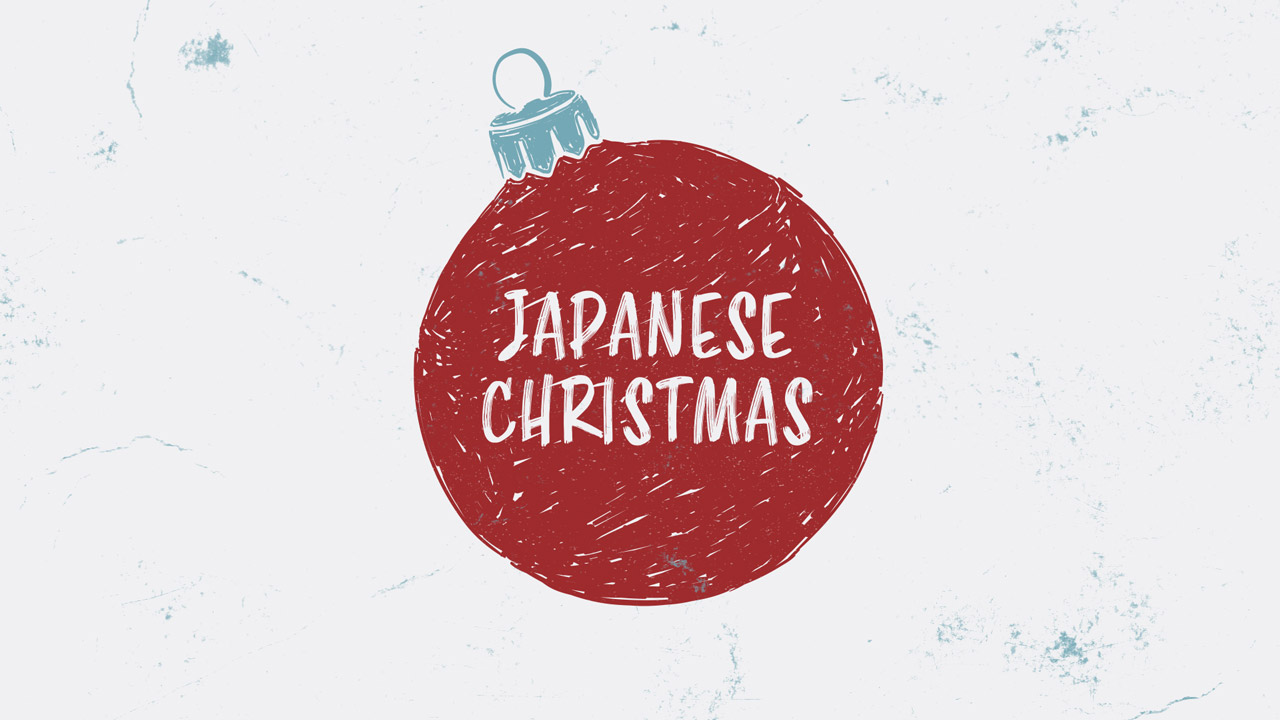
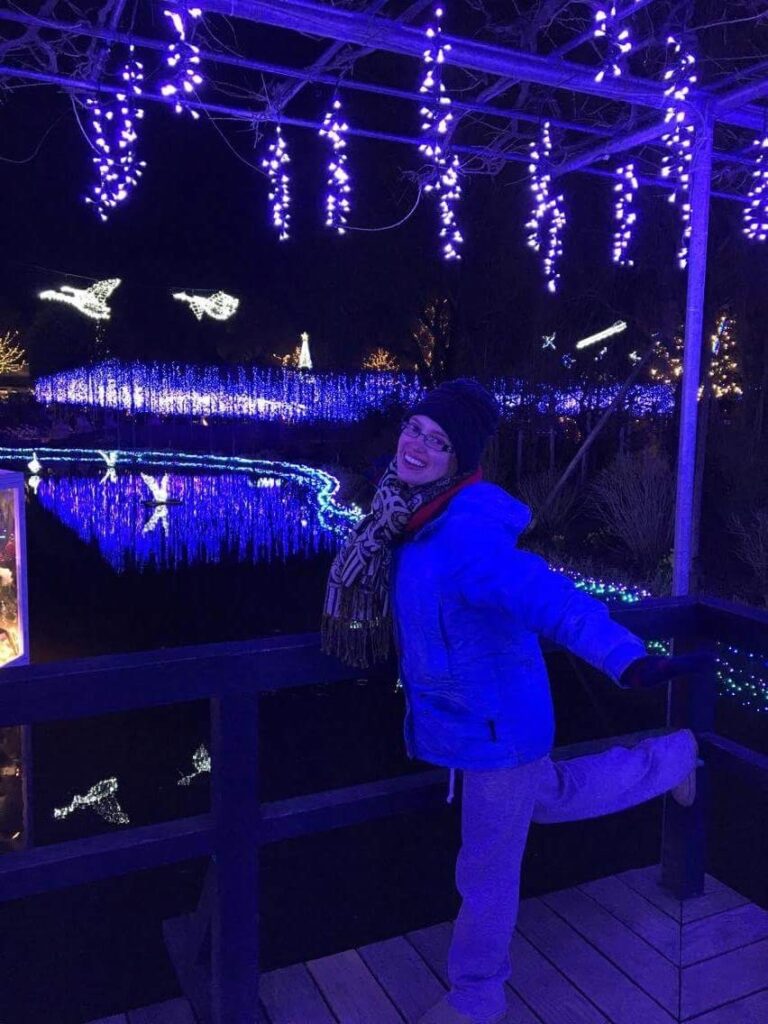
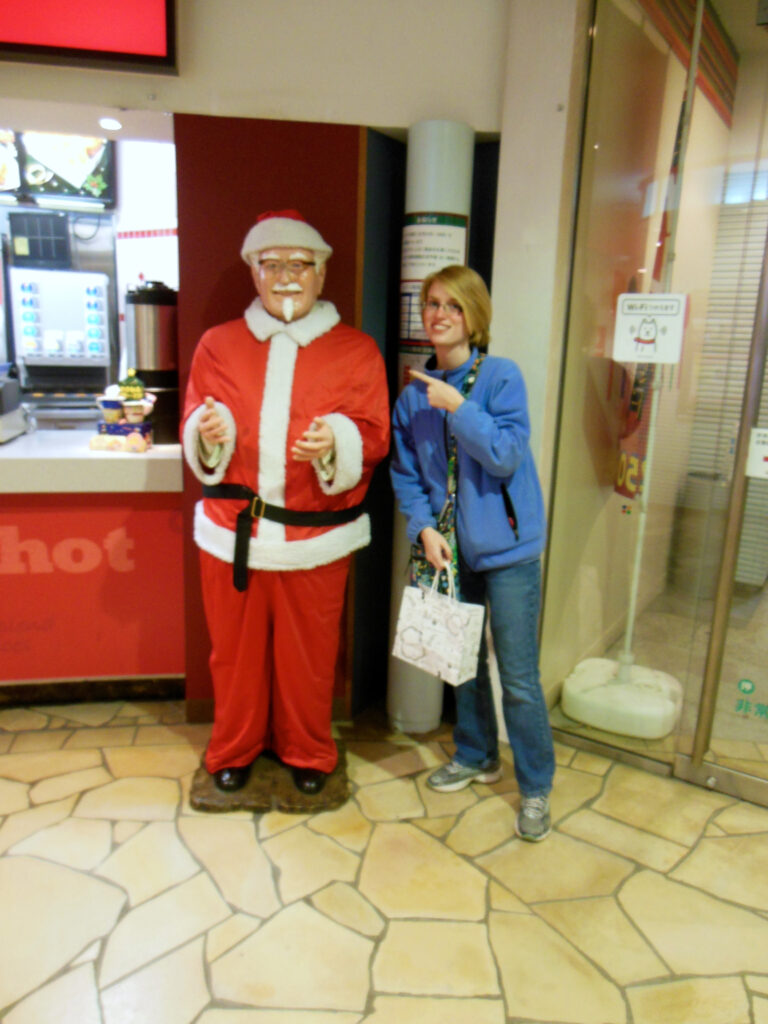
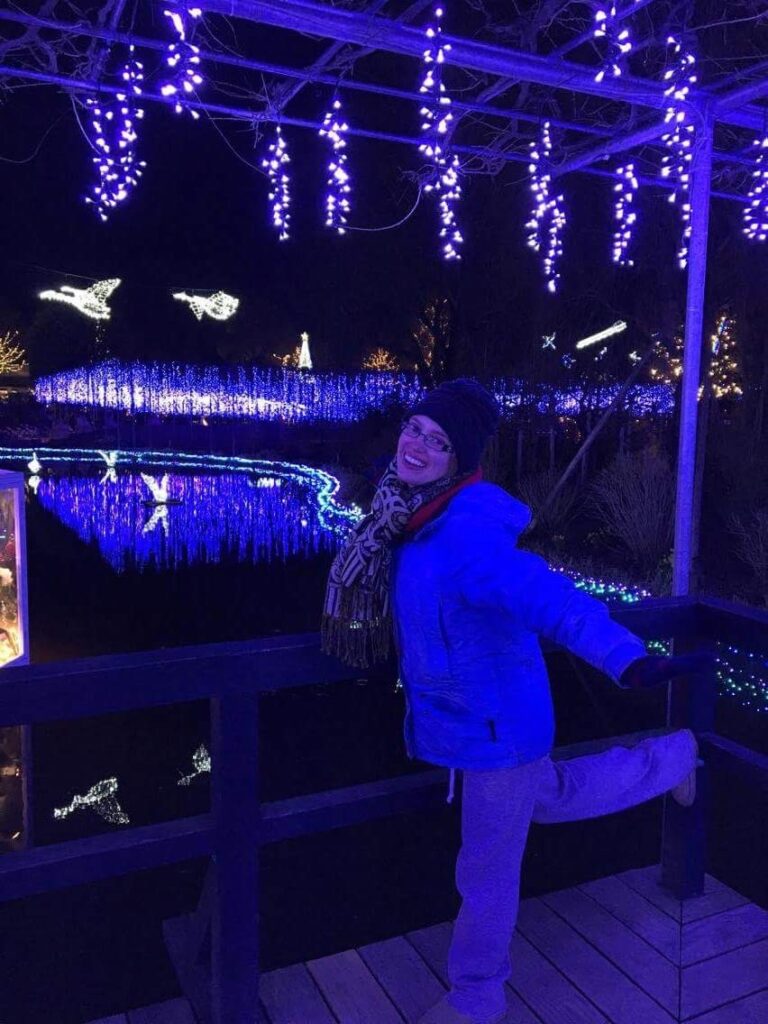
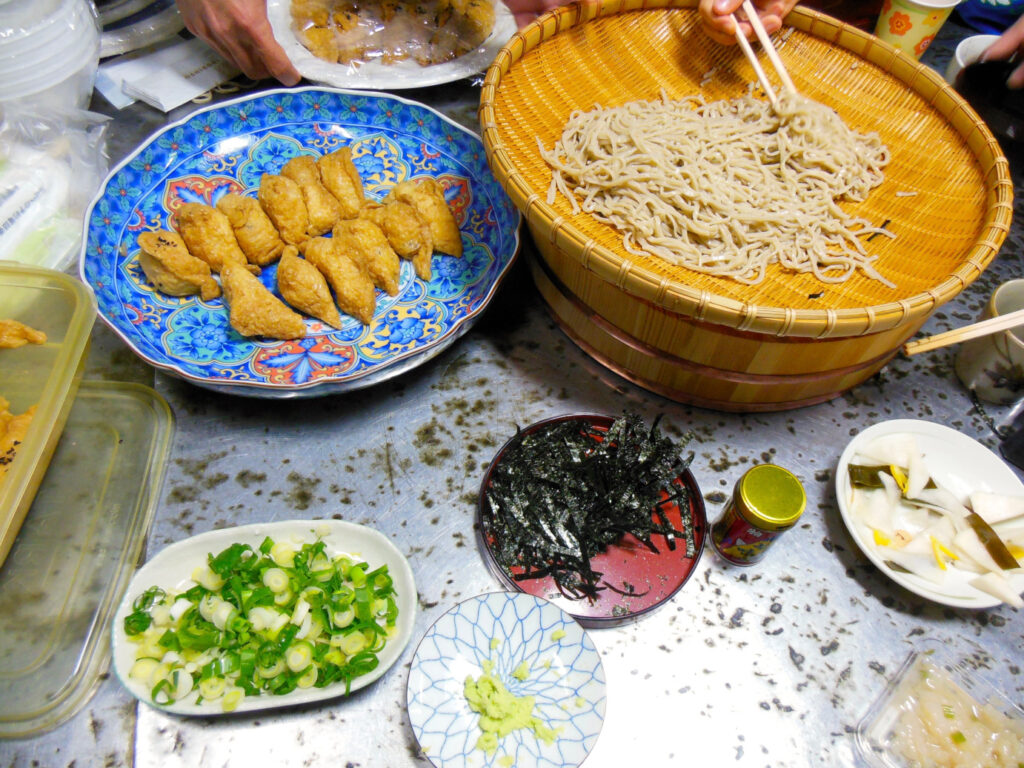
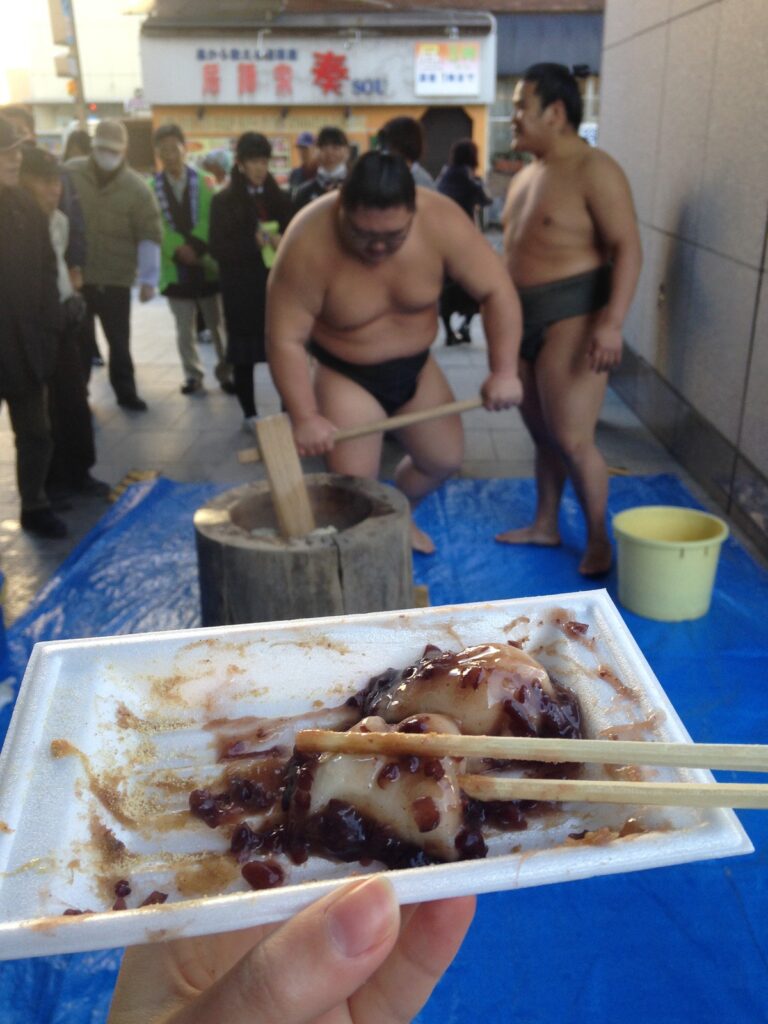

Social